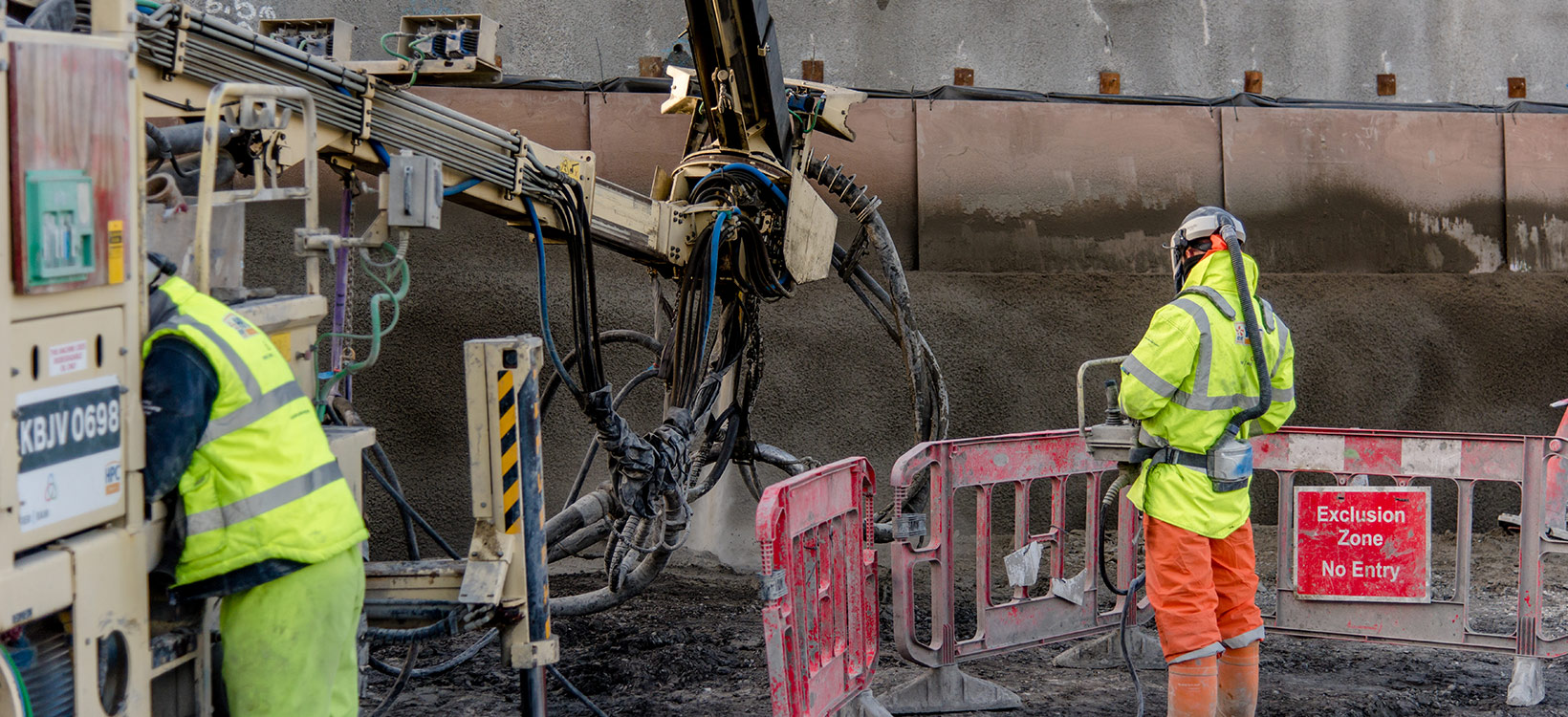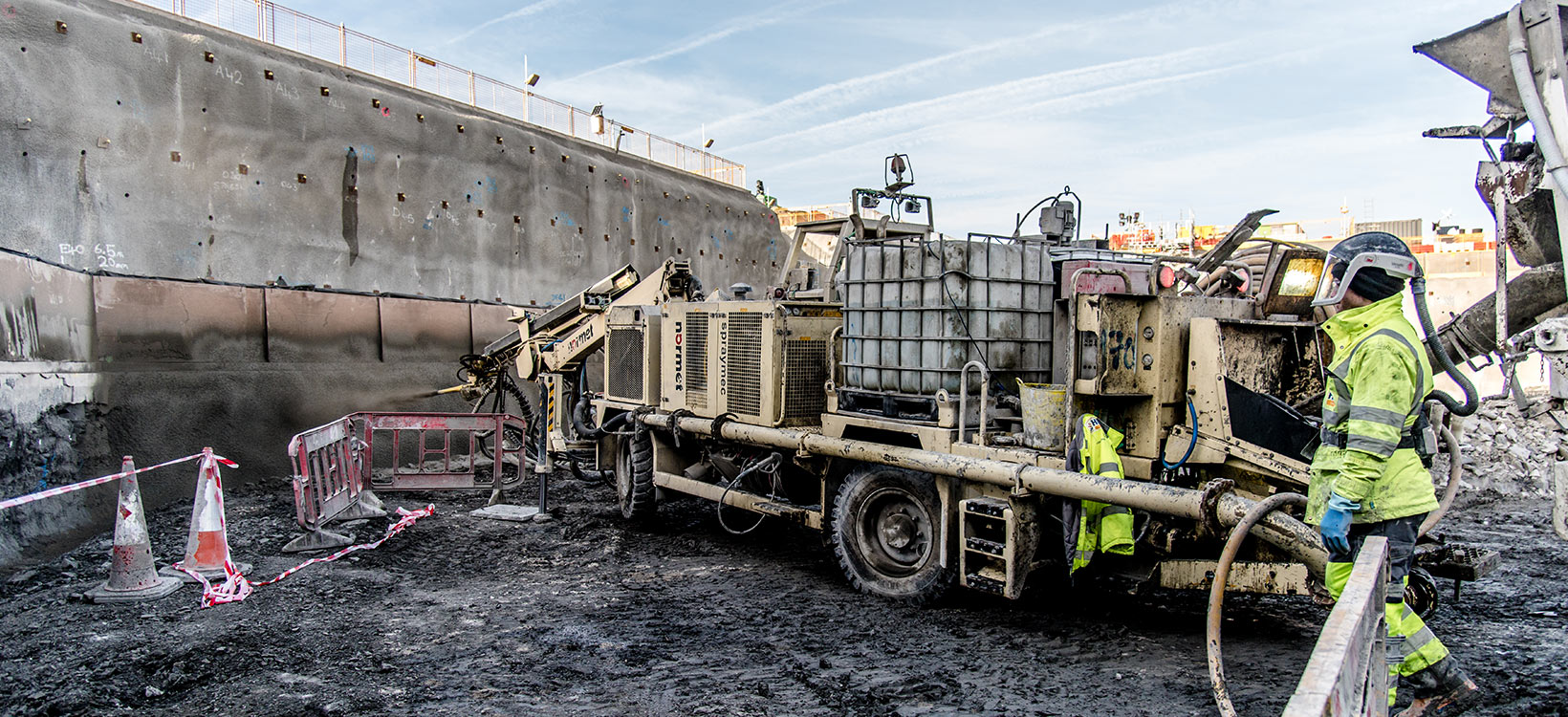Driving productivity with smart drilling at Hinkley Point C
Case study

Author: Mike James
A belief in doing things better continues to drive innovation at Hinkley Point C (HPC), the first of a new generation of European Pressurised Reactor (EPR) nuclear power stations being constructed in the United Kingdom. This vision isn’t simply a throw-away statement but echoes from every corner of one of the largest construction sites in Europe and is ingrained in the makeup of its people.
To obtain core samples and establish a safe foundation prior to construction of this mega project, geotechnical drilling was needed. Geared with Leica Geosystems solutions, HPC adapted cutting-edge geotechnical drilling – the first of its kind in the U.K. This methodological operation phase was led by Julian North, former senior geotechnical engineer at Kier BAM Joint Venture.
Introducing machine control to geotechnical drilling
Geotechnical drilling is performed before construction begins to prepare and analyse the site, determining soil stability and the geology of the site. Complex heavy construction works, like geotechnical drilling, can greatly benefit from machine control, which displays and positions tools according to reference, allowing operators to position the bucket or blade between the target grade.
Having overseen the geotechnical drilling operations at HPC, from the early ground works investigation and instrumentation drilling through to the main ground installation, North understands the benefits of digitalising operations with machine control, “We looked at potential risks and how we can make traditional approaches of geotechnical drilling better for everyone – machine control fit this belief.”
What North found was that positional control is vital to geotechnical drilling and having quick access to certain information in the field is crucial. “One big advantage is that we do not need to do a topographical survey. We can go in using an excavation model into an area where we may not have been able to excavate before,” explained North. “Machine control saves vast amounts of engineering time and ensures far better optimisation of equipment.”
North also highlighted the importance of benefits beyond machine optimisation, “Health and safety have a huge payback. Capitalising on remote-control systems limits exposure to noise, dust and hazards of large equipment.”
Stitch drilling to increase productivity

Stitch drilling is the process of drilling a series of holes near one another (typically 200 to 250 millimetres), creating a line of weakness. Making it easier for an excavator to exploit any discontinuity and tear out the intact rock. This technique results in faster and cleaner excavation, minimising disturbance of the remaining rock mass.
Equipped with Leica iCON iRD3 solution in two drilling rigs, operators completed more than 40,000 linear metres of stitch drilling. North explained the benefits of this method, “As the rock naturally weakens, you can use smaller excavators, useful for deeper parts of the excavation where space for a larger plant is limited.”
As stitch drilling normally comprises the drilling of large numbers of shallow holes, any decrease in the time taken to set up the drill mast on individual holes had a significant implication in reducing the overall time taken to complete a specified area. The use of Leica Geosystems machine control enabled the setup of the drill mast at the correct orientation and position, bringing not only significant savings but also reducing labour and engineering resources.
North witnessed how well the machine operators adopted Leica Geosystems technology. “As soon as they used it for a couple of days, it was ‘I can’t go back. I can’t do this any other way’,” added North. “The machine operators found the screen ideal for them to set the drill mast up. The engineers also loved it because they didn’t have to be out in a muddy site all the time, we could just drill in a line and didn’t have to worry about losing the finite positions.”
Digging deeper: excavation
The use of machine control allowed operators to do fewer drilling rigs more efficiently with less downtime without waiting for positions to be excavated or marked out. This efficiency released the drilling rigs to complete other drilling activities faster and with less supervision.
The complex components of deep excavation were made up of more than 100 different construction platforms, numerous galleries, shafts and sumps. Vertical rock faces ranged in height from less than 1 m to 38 m, so boundaries had to be designed to allow for the difference in elevation.
“All faces are treated with site-produced steel fibre reinforced sprayed concrete within 48 hours of excavation to provide protection from weathering,” explained North. “Ground nails [metal bars] are then installed to provide global slope stability for surcharge loads that will be imposed by cranes.”
Geotechnical drilling and beyond

At HPC, digital construction, encompassing 3D modelling of construction sites and visualising end-to-end construction project workflows is instrumental. “Every operation at Hinkley Point C is examined, to make it better in terms of safety, quality and productivity,” explained North.
For this construction stage, positioning the drilling rigs to drill mast at the correct orientation and position using machine control brought significant time and resource savings while reducing exposure to dust, noise and equipment hazards.
According to North, machine control drives productivity by transforming practices through the whole project cycle, such as taking away ground nails, like railway cuttings, in slopes. “You have a virtual site layout held in the machine control system. There are also huge benefits with the control of instrumentation holes for site investigation. There is a huge opportunity where machine control can be used.”

























